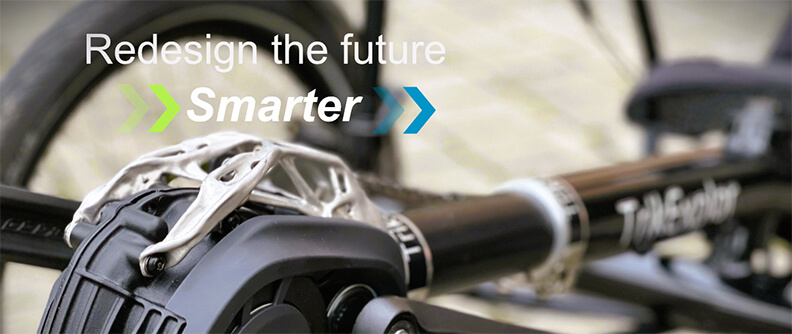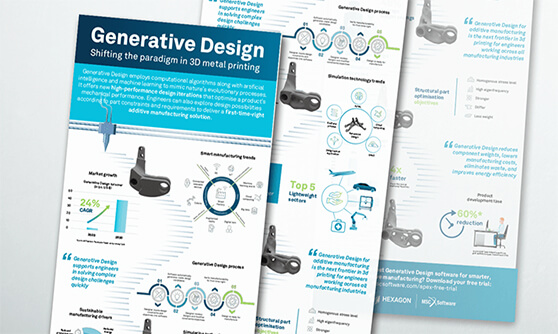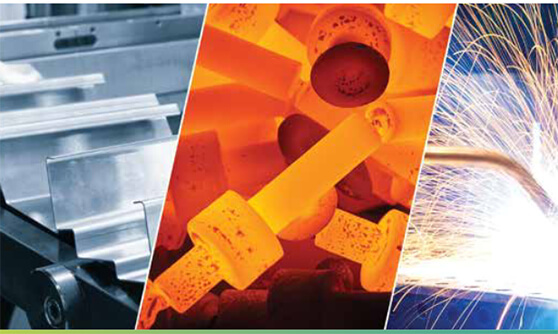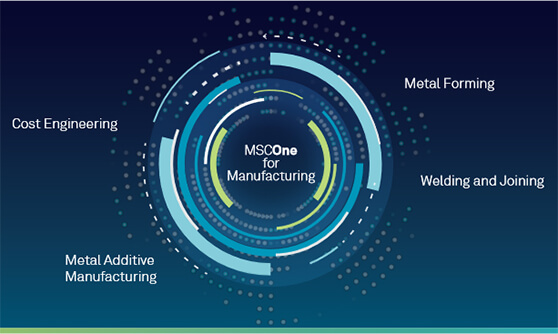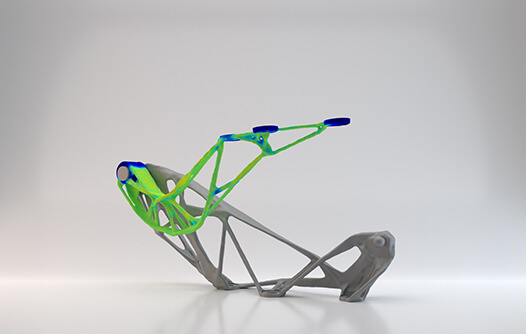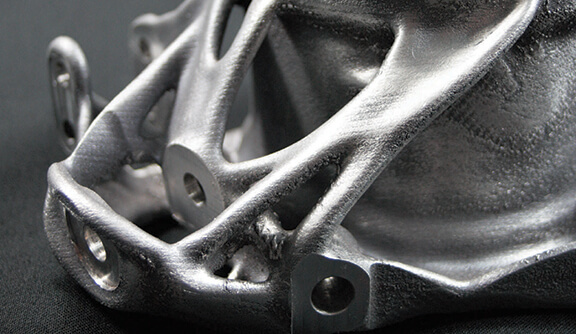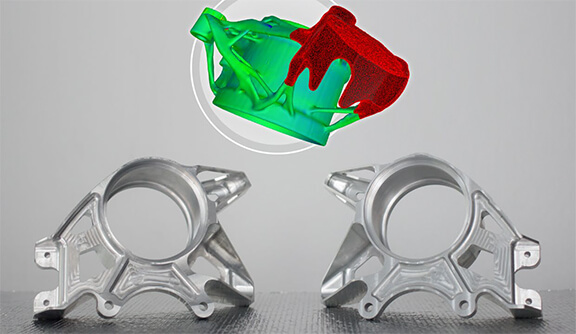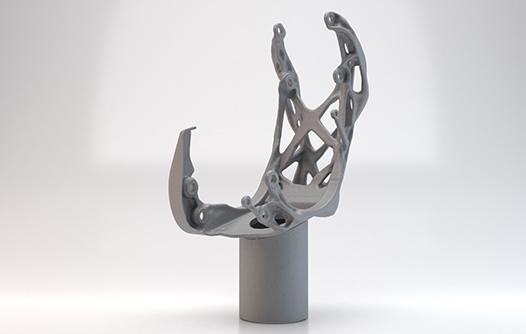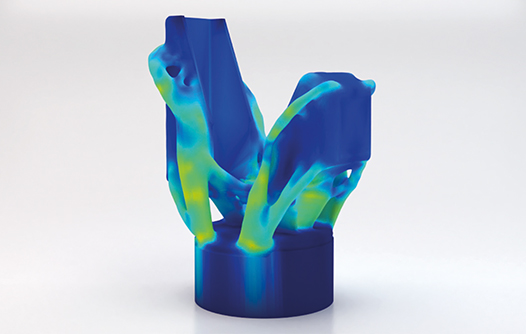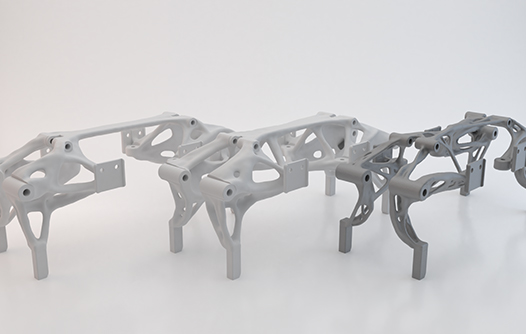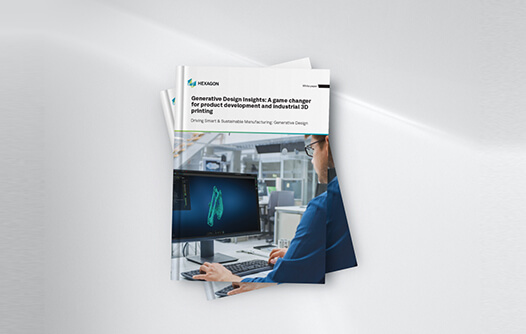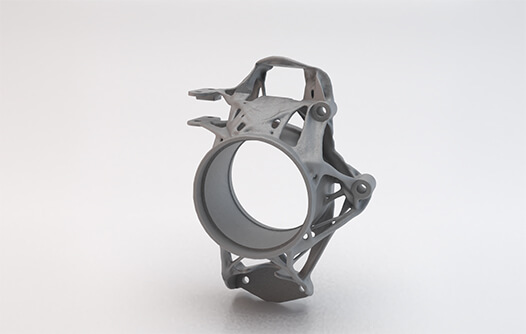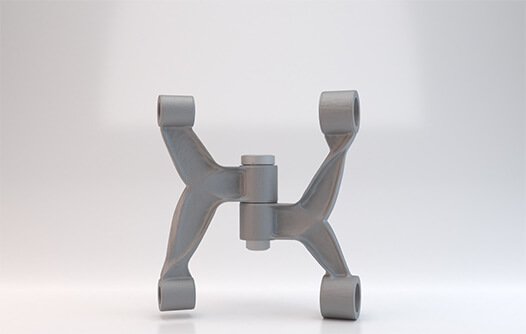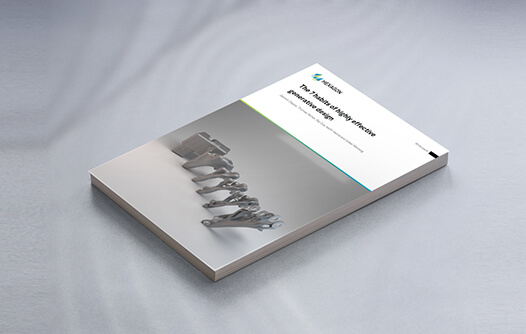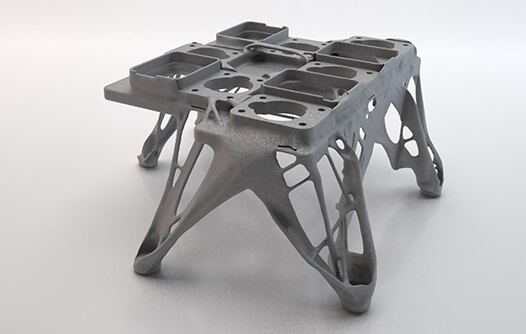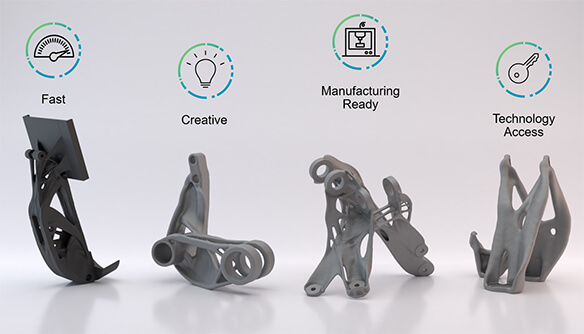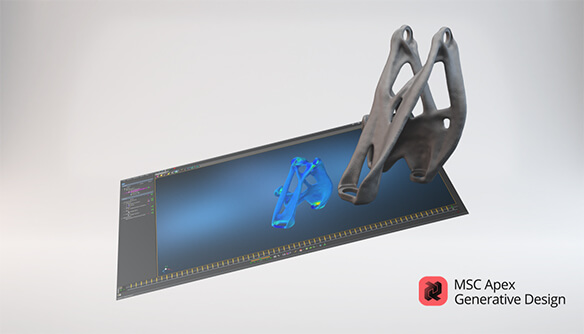MSC Apex Generative Design
Smart Generative Design for an unmatched Design for Additive Manufacturing Experience

Advanced optimisation
Bridge the gap between design and manufacturing with Smart Generative Design. Create optimised designs that perfectly match their requirements.

Generative Design Infographic
Shifting the paradigm in 3D metal printing: Trends, drivers, market and key facts about Generative Design.

Advanced optimisation
Bridge the gap between design and manufacturing with Smart Generative Design. Create optimised designs that perfectly match their requirements.

Generative Design Infographic
Shifting the paradigm in 3D metal printing: Trends, drivers, market and key facts about Generative Design.

Advanced optimisation
Bridge the gap between design and manufacturing with Smart Generative Design. Create optimised designs that perfectly match their requirements.

Generative Design Infographic
Shifting the paradigm in 3D metal printing: Trends, drivers, market and key facts about Generative Design.

Advanced optimisation
Bridge the gap between design and manufacturing with Smart Generative Design. Create optimised designs that perfectly match their requirements.

Generative Design Infographic
Shifting the paradigm in 3D metal printing: Trends, drivers, market and key facts about Generative Design.
Ready to learn more?
Intelligent smoothing
Automatic mesh generation
Automatic resolution adjustment
Significant time reduction
Stress based optimisation
Automated retransition to CAD
Intelligent smoothing
Automatic mesh generation
Automatic resolution adjustment
Significant time reduction
Stress based optimisation
Automated retransition to CAD
Intelligent smoothing
Automatic mesh generation
Automatic resolution adjustment
Automatic resolution adjustment
Significant time reduction
Stress based optimisation
Automated retransition to CAD
Intelligent smoothing
Automatic mesh generation
Automatic resolution adjustment
Significant time reduction
Stress based optimisation
Automated retransition to CAD
Intelligent smoothing
Automatic mesh generation
Automatic resolution adjustment
Innovative technology for innovative designs
MSC Apex Generative Design's innovative approach has been proven in practice
It is based on Finite Element Analysis but, unlike traditional methods, does not use a density field, rather utilizes a very fine mesh with well-defined elements. This enables the algorithm to directly evaluate the occurring stresses, as well as reliably derive distinct geometries that are truly unimaginable by human mind.
Design for Additive Manufacturing (DfAM) without Expert Knowledge
MSC Apex Generative Design is designed specifically to generate the detailed and highly complex structures that only additive processes can manufacture. The optimised designs exhibit perfect transitions between structure elements such as struts and shells as well as they contain usually self-supporting structures that ensure the results can be sent straight to print.
MSC Apex Generative Design at a glance
- Simplicity - No expert knowledge required for conducting optimisations through a high user-focused software design.
- Automated Design - Almost automatically generate multiple smoothed design candidates that all satisfy the design criteria while minimizing the weight.
- Import and Validation - Import existing geometries or mesh, find optimized design candidates, and perform design validation - all inside a single CAE environment.
- Direct Output - Export geometry that can be directly manufactured and used immediately without manual re-work.
- One Process - Import the resulting geometries in Simufact Additive or Digimat AM to achieve cost-efficient first-time-right result for every part.
Case study: Lightweight bracket
Case study: Optimised wheel carrier
Case study: Stiff motor mount
Learn more about MSC Apex Generative Design
Collaterals
Brochure
MSC Apex Generative Design
Infographic
Generative Design and Metal 3D printing
Flyer
HxGN Virtual Manufacturing Suite
Flyer
MSCOne for Manufacturing
Case Study
Accelerate development of complex hood hinges
White Paper
Reducing costs through virtual simulation
Case Study
Engineering ingenuity driven by Generative Design
Case Study
Generative design helps e-Bike manufacturer
Case Study
How generative design was used to get a legacy train
Case Study
Lightweight additive technology for increased
White Paper
Enhance product development efficiency with GD
Case Study
Easy handling of difficult tasks
Case Study
Race sports: Catch the highest performance
Case Study
Generating competitive 3D printing designs
Case Study
Optimising semiconductor production hardware
Case Study
Satellite technology: Lightweight construction
Case Study
Enabling reliable aircraft structures
Case Study
Accelerate development of complex hood hinges
White Paper
Reducing costs through virtual simulation
Case Study
Engineering ingenuity driven by Generative Design
Case Study
Generative design helps e-Bike manufacturer
Case Study
How generative design was used to get a legacy train
Case Study
Lightweight additive technology for increased
White Paper
Enhance product development efficiency with GD
Case Study
Easy handling of difficult tasks
Case Study
Race sports: Catch the highest performance
Case Study
Generating competitive 3D printing designs
Case Study
Optimising semiconductor production hardware
Case Study
Satellite technology: Lightweight construction
Case Study
Enabling reliable aircraft structures
Case Study
Accelerate development of complex hood hinges
White Paper
Reducing costs through virtual simulation
White Paper
Reducing costs through virtual simulation
Case Study
Engineering ingenuity driven by Generative Design
Case Study
Generative design helps e-Bike manufacturer
Case Study
How generative design was used to get a legacy train
Case Study
Lightweight additive technology for increased
White Paper
Enhance product development efficiency with GD
Case Study
Easy handling of difficult tasks
Case Study
Race sports: Catch the highest performance
Case Study
Generating competitive 3D printing designs
Case Study
Optimising semiconductor production hardware
Case Study
Satellite technology: Lightweight construction
Case Study
Enabling reliable aircraft structures
Case Study
Accelerate development of complex hood hinges
White Paper
Reducing costs through virtual simulation
Case Study
Engineering ingenuity driven by Generative Design
Case Study
Generative design helps e-Bike manufacturer
Case Study
How generative design was used to get a legacy train
Case Study
Lightweight additive technology for increased
White Paper
Enhance product development efficiency with GD
Case Study
Easy handling of difficult tasks
Case Study
Race sports: Catch the highest performance
Case Study
Generating competitive 3D printing designs
Case Study
Optimising semiconductor production hardware
Case Study
Satellite technology: Lightweight construction
Case Study
Enabling reliable aircraft structures
Case Study
Accelerate development of complex hood hinges
White Paper
Reducing costs through virtual simulation
On-Demand Webinars
Webinar
Spice your engineering workflow with generative design
Webinar
How Apex Generative Design eases your engineering life
Training Series


